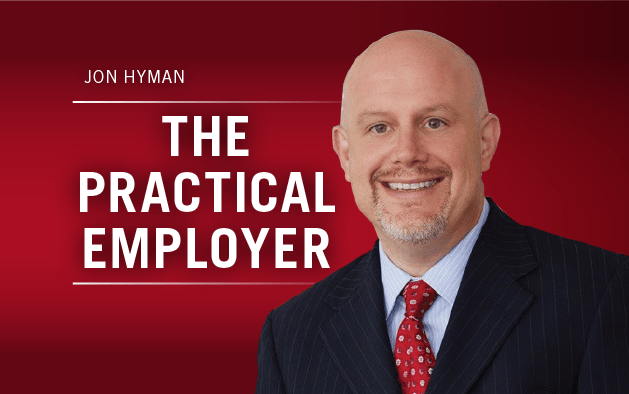My father passed away in October 1986 from a heart attack at age 49.
That was his last in a series of major and minor cardiac events. I was 21 years old when he died. At the time I perceived my father to be old (as do most children).
Now, at age 53, it’s an odd perspective to look back at his passing and reflect on where he was in his stage of life and career and consider his outlook on the future.

My family has a history of heart disease and my father was no exception. As an engineer for General Electric, he worked long, hard hours and traveled frequently.
Physical activity, nutrition and doctor’s visits were not high on his priority list. I call this attitude the “I feel fine so I must be fine” mentality.
He enjoyed eating the crispy skin off the Thanksgiving turkey, fat from a well-cooked steak and ladles of cream sauces — all the good-tasting stuff that was loaded with calories, fat, cholesterol and sodium.
When my father had his first heart attack, the doctors found he had extremely high blood pressure and major blockages in all four of his arteries. By that time, too much damage had been done to his heart and there was nothing they could do for him. Still, my father started eating better, took up golf, spent less time at work and focused on reducing his stress.
It’s important to remember that during my father’s lifetime, 1937 to 1986, company wellness programs did not exist. He grew up with exercise guru “The Jack LaLanne Show,” hula hoops, calisthenics, the sauna suit, vibrating belts and other early fitness trends and fad diets. Most centered on the external appearance of fitness but lacked a focus on inner fitness, the biometric and lifestyle measurements that truly determine if one is healthy.
You would think I learned something from his experience, but you’d be wrong. When I was young I felt indestructible.
I had a high metabolism and didn’t gain weight no matter what or how much I ate. The good news: I was physically active in soccer, aerobics, long-distance running, weight lifting, competitive Taekwondo and many other activities.
The bad news: my diet was significantly less than stellar. It wasn’t unusual for me to have fast food for breakfast, lunch, dinner and a late-night snack all in the same day. I inherited my father’s “I feel fine so I must be fine” mentality.
In 1993, after eight years in the Air Force, I returned to civilian life to work at a large insurance carrier, where I learned about health care claims, annual employee benefit renewals and risk management, which drive and control an employer’s health insurance costs. I began to understand that the overall health of a workforce can affect an employer’s health care costs.
I learned about the decisions that organizations must make about health insurance cost sharing, like imposing premium increases, and that employee benefits are a large part of the workforce’s total compensation. I observed how employees who do not take responsibility for their personal health can cause others who do to pay more for their own health care benefits, something that always struck me as unfair.
At age 35, I finally visited my doctor for an annual physical, and the results were not good. My total cholesterol was over 300, my HDL was low and my LDL and triglycerides were high. I was also diagnosed with hypothyroidism.
While this was an “aha!” moment, I should have seen it coming. I knew that I had a family history of high cholesterol and most men on my father’s side of the family died young from cardiac-related causes. But “I felt fine so I must be fine.”
My doctor prescribed cholesterol and thyroid medication. I began to focus on nutrition and continued to be physically active. After one year, my numbers started to improve, but even now I still have work to do. Progress, not perfection.
While conditions like these may take years to produce symptoms and can initially go unnoticed, they are still incrementally causing damage to one’s health and well-being. This is why it’s so important to focus on preventive measures to manage a disease before it has the chance to cause a major medical event.
After my father had his first heart attack, he was released from the hospital and sent home. He walked slowly so as not to raise his heart rate. One day I watched him spend 20 minutes walking up 15 steps in our house. When we lose our health it’s the simple things we take for granted that are impacted the most.
Seeing first-hand the impact of how an undiagnosed heart condition affected my father’s health helps me stayed focus on wellness. In every wellness program participant, I see someone whose life can be positively impacted.
I often reflect on what would have happened if my father’s company had a wellness program. Knowing him, he would have been one of those people who wouldn’t want to participate. Because he was too busy. Because he didn’t have the time. Because it didn’t make sense; he “felt fine.” Because he had too many other things to do. Because it was his choice how he managed his health, not the company’s.
While all of this may be true, I think that if he had participated in a wellness program, gotten his blood work done and learned about his high blood pressure and high cholesterol before he had a heart attack, he would still be here today.
So I ask you, what’s the downside of participating in a wellness program?
Gary Cassidy is the director of employee education, communication and wellness for Camden, New Jersey-based insurance broker Corporate Synergies.




 Englewood said that part of the upset toward the smoking ban may be derived from the veteran’s addiction to these products.
Englewood said that part of the upset toward the smoking ban may be derived from the veteran’s addiction to these products.





 If you’re a health care facility whose employees erect a “wall of shame” of disabled patients, and then you drag your feet when an employee, who was also a patient, reports the misconduct, you might be the worst employer of 2019.
If you’re a health care facility whose employees erect a “wall of shame” of disabled patients, and then you drag your feet when an employee, who was also a patient, reports the misconduct, you might be the worst employer of 2019. 
